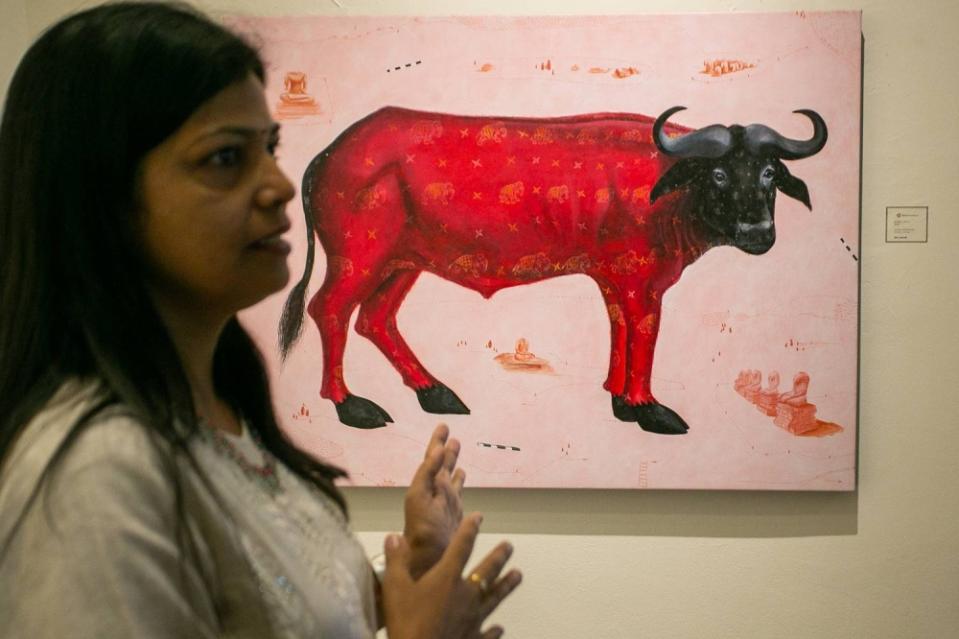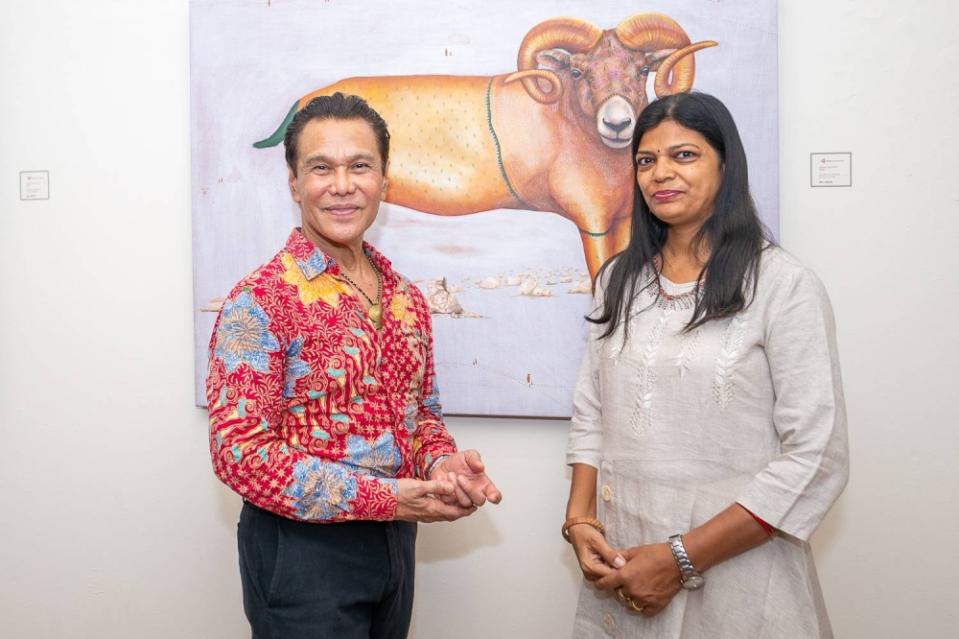Indian artist Helen Brahma blends women's spirituality, self worth in KL ‘Guardian Spirits’ exhibition

PETALING JAYA, Sept 23 — Artist Helen Brahma believes that having a sense of self is important for her work.
“Everywhere, everyone seems to be having an identity crisis, no?” she said with a smile
“I think women in particular tend to sacrifice their identity, the sense of who they are, for the sake of everyone else around them.”
This sense of identity is aptly reflected in Helen’s latest exhibition “Guardian Spirits”.
Currently displayed at the Sutra Gallery in Persiaran Titiwangsa, Kuala Lumpur, the exhibit features some 53 intricate paintings of vahanas (the animal vehicles of Hindu gods).
There is a curious twist to Helen’s depictions of these animals, each one is wrapped in Sambalpuri textiles, a traditional ikat fabric from her home state of Odisha in India.

Helen says that the overarching theme of her work is one of identity, both in terms of her cultural heritage as well as a woman. — Picture by Devan Manuel
As a result, the exhibit offers viewers a surreal and mesmerising experience, evoking themes of spirituality, culture, and man’s relationship with nature.
Speaking to Malay Mail while she was in town recently, Helen explained that “Guardian Spirits" is an extension of a larger body of work she has been working on for the past decade.
After starting her career as an artist by painting still life and nature studies, she said she began to look more closely at her own surroundings through a research project in Odisha.
“I was helping an art historian, Elinor Gadon, with her research on the local temples by carrying out translation work for her,” said Helen.
“In Odisha, there are many temples for yoginis (deities) who are all women — one of the most famous is one in Hirapur that has 64 yoginis.
“So I started thinking about how women were revered in our culture, and seen as important.”
At the same time, she was struck by the contrast between this worship and the lives of the women around her.
“In my environment, in my hometown Jajpur, I see many housewives and their work underappreciated.
“Working women are seen as powerful and prestigious, but housewives are often neglected and almost hidden away, despite them doing so much work without days off or pay.
“While we do have all these yogini temples, I feel that many of these are not given enough attention — in some way, I wanted to create work that will highlight these ‘hidden’ deities and housewives, to show that they deserve recognition too,” she said.
She added that she chose to incorporate Sambalpuri textiles in her paintings as the fabric represented an additional dimension to her identity as an Odisha woman.
“In Odisha, people give textiles, sindoor, or bangles as offerings when they visit temples.
“So with my paintings of Sambalpuri, I’m offering my culture’s textiles to the audience — this is a personal offering that is very much a part of who I am,” she said.
The making of a Sambalpuri textile or sari, the very same fabric worn by Odissi dancers, is a time-consuming process that can take months to complete.

(From left) Ramli and Helen pose for a photograph with one of the paintings in ‘Guardian Spirits’. Ramli said he was keen on bringing Helen's work to Malaysia, as it highlighted the beauty of Odisha traditions while strengthening the cultural links between Malaysia and India. — Picture by Devan Manuel
It involves repeatedly tie-dying warp and weft threads, before they are woven into intricate and colourful designs.
Similarly, Helen shared that it took her around three years of iteration to accurately depict the fabric in her painting.
“Sambalpuri patterns are very precise and detailed, so I had to research these designs in the first place,” she explained.
“Then it was a process of seeing how they worked on the canvas; it took me some time to paint them in such a way that they don’t look flat and lifeless.
“Many of these were created throughout the two years of the pandemic, so having that time did help.”
While Helen has widely exhibited in India and across the world, this is her first show in Malaysia — a feat pulled off thanks to dancer and choreographer Datuk Ramli Ibrahim.
As Ramli is the country’s main exponent of classical Odissi dance and traditions, the pairing is far from surprising.
“Helen’s work is incredibly interesting, because she is a very modern woman who has subsumed her modernity in a traditional context,” he told Malay Mail.
“This exhibition in a way also showcases the 65-year relationship between Malaysia and India, especially our contemporary cultural arts links between each other.”
Ramli, who is also Sutra Foundation’s chairman, added that he was glad to have the support of Yayasan Hasanah and its Arts For All Seasons (ArtsFAS) initiative in staging the exhibition.
Helen’s next series of work will likely focus on another component of cultural identity — language.
“I don’t think I will run out of subject matter when it comes to identity,” she said with a laugh.
“It’s something that everyone can relate to, and I feel it’s something everyone needs.”
“Guardian Spirits” will run at the Sutra Gallery until September 30.
Entry is by appointment, and those interested can email sutrafoundation25@gmail.com to book their viewing slot.


